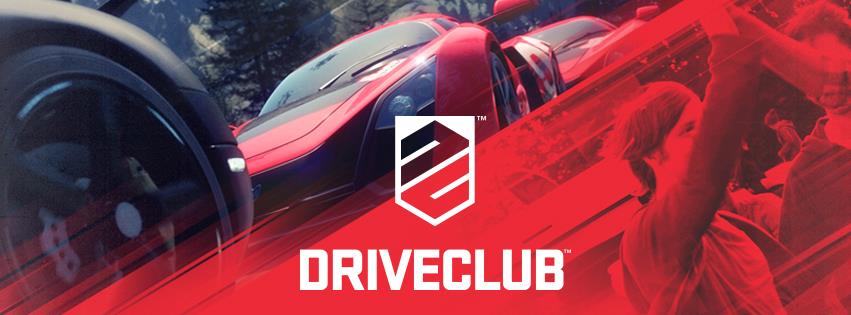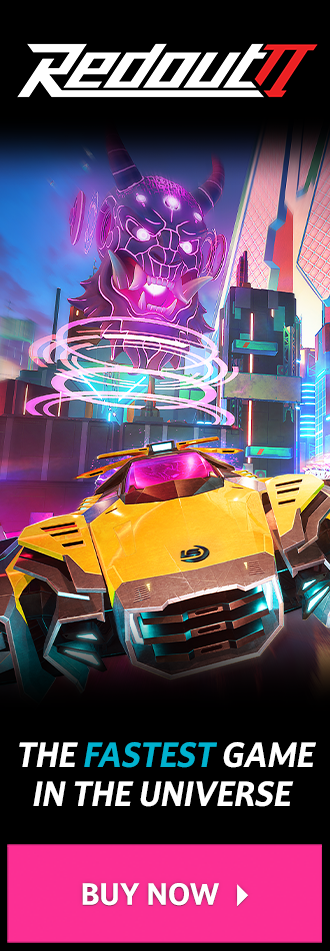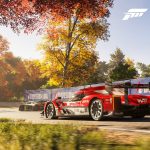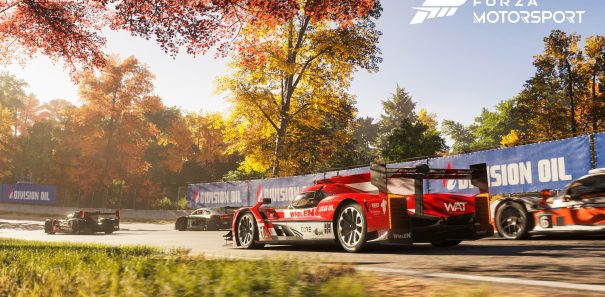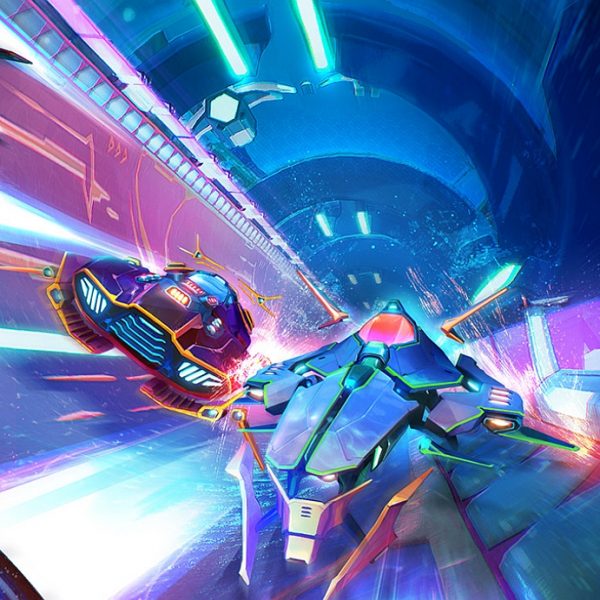It’s been a long and bumpy road for DriveClub, to say the least. What should have been the PS4’s premier launch racing title stalled spectacularly on release, subsequently crashing and burning as soon as it launched off the line.
Indeed, it’s impossible to steer away from the delicate subject of DriveClub’s well-documented launch issues. Already a year late to the party after an unceremonious delay, DriveClub bared the brunt of an almighty backlash when its online servers buckled under the strain, making the online multiplayer and integrated social features inaccessible. Meanwhile, the long- promised free-to-play PlayStation Plus edition of DriveClub was nowhere to be seen, and still hasn’t materialised at the time of writing, despite assurances the developers are still working on it.

For a game where the online aspect was such a crucial component of the “connected experience”, it was an unmitigated disaster, and an embarrassing situation for Sony as first party publisher. Consequently, DriveClub will be remembered as one of the worst game launches in history. The unfortunate situation also cost Evolution dearly, resulting in the studio sadly suffering layoffs. Seeing such a long-established and talented studio face such losses is truly heart-breaking.
Understandably, the neverending online woes clouded some people’s opinion of DriveClub initially. Which is a crying shame, because it overshadowed some of DriveClub’s outstanding merits deserving of commendation.
As such, we’ve been holding off our final review until DriveClub was restored to a more road-worthy state. After several months back in the garage, the flames have been extinguished, the crumped bodywork has been restored and its spluttering engine has finally roared into life; its lamented launch issues mercifully now a distant memory. But was it worth the wait, or has the damage already been done?
Join the club
The driving force behind DriveClub is, as you will have gleaned from the title, the club component, where up to six players can form their own racing club and take on rival clubs around the world – the idea being that every member can still contribute to the club’s overall ranking without needing to finish first in a race. It’s a concept Evolution has apparently had in mind for over ten years, but the technology limitations at the time prevented them from realising their vision.
Admittedly, I was sceptical at first. After-all, EA’s Autolog has been doing the ‘socially connected’ thing for years to great acclaim, and DriveClub’s club system isn’t too dissimilar to a standard clan setup on the outset. But while DriveClub’s social system isn’t as revolutionary as the developers would perhaps lead you to believe, it’s been smartly implemented.

Fame points, DriveClub’s term for XP, contribute to both your individual player and club ranking simultaneously. They also mount up even when you’re progressing offline too, so you always feel like you’re contributing and progressing. It’s a smart way of integrating online progression into the single player without being obtrusive like Need for Speed’s AllDrive.
Winning races is obviously the easiest way to rack up Fame points, but mid-race head-to-head challenges allow players to embrace their skillset. During an event, set sections of the track challenge you to real-time face-offs against competitors, whether they’re people on your friends list or online strangers: challenges range from maintaining a longer drift, to beating an average speed or adhering to the racing line. It’s well-implemented, but it can sometimes divert your focus, causing you to go out of your way to win a face-off at the detriment of your race position – trying to drive around a corner sideways in a bid to beat someone’s drift score isn’t the most efficient way round a track if you want to win the race after-all, but it’s undeniably more fun.
But it’s the online Challenges that prove to be DriveClub’s masterstroke in keeping you hooked. Ironically, it was one the last features to be switched on after its extended downtime, but they help the game roar into life. Finish an event, and you’re given the option to send your best record as a direct challenge to rival players and clubs. It’s a simple, but effective hook that’s brilliantly executed. Combine the Challenges with the obligatory online leaderboards and player ghosts, and DriveClub is a captivating and compulsive experience when it’s firing on all cylinders.

It’s a shame, then, that the club system is so limited – for a current-gen game with such lofty ambitions, six players isn’t nearly enough to realise its potential, and you can’t join multiple clubs at once either, disappointingly.
It’s a similar story with the car customisation. While there are a variety of personalisation options available to give your club a unique identity, they’re limited to decorative decals. Fortunately, you can still race in factory colours if that’s your preference, but you’ll still often see your opponents racing in cars with unflattering garish colours and tacky decals. You can’t mechanically tune your car either, but DriveClub isn’t designed to satisfy that camp. If you want to tinker with the mechanics, there are plenty of other options available in the market.
Of course, joining a club isn’t mandatory, but you will miss out on the core experience and all the incentives that go with it: several cars can only be unlocked by ranking up in a club, and racing in team colours earns you double fame points. Without the club component, DriveClub felt hollow when the online functionality wasn’t working.
For all of DriveClub’s ambitions, the online multiplayer racing falls flat. You can register to any available race events that take your fancy, but the selection is sparse, and there’s no option to filter specific race types, locations or car types if you fancy playing something in particular. From there, the races often take an age to start while you wait around in lobbies twiddling your thumbsticks while it connects everyone – it all feels a bit too archaic in a current-gen game when we’ve become used to immediately jumping into online races set in free roaming open world environments. Fortunately, the 12 player races are mostly lag free compared to before, but you’ll still encounter rival racers resorting to relentless ramming. You also currently can’t create private matches which is a significant setback, but Evolution are said to be working on adding this functionality in the near future.
For the purists
On the single player side of things, you have the Tour mode which acts as DriveClub’s conventional career, with arbitrary race, time trial and drift events that are at least elevated by the social integration. While DriveClub’s Tour falls short on event types, it makes up for it with a variety of themed events that shake up the formula in inventive ways to avoid repetition: some events pit cars from different continents against each other such as British cars (e.g. Lotuses and Bentleys) versus German cars (your Beamers, Audis and Mercs), for example, whereas others focus on a particular car class. One minute you’re racing in exotic supercars, the next you’re jostling with a grid of lightweight trackcars. One event even challenges you to survive a race against lightweight sports cars in a burly Bentley.

You’ll be doing a fair bit of grinding, though. Each tier of championships becomes increasingly difficult to unlock, requiring a set number of stars to unlock later races and championships which can be earnt by completing up to three objectives in a race. It’s a tried and tested formula, but it works, and adds considerable replay value for completists – you can still finish first, but it’s a hollow victory if you don’t achieve every objective.
It’s all presented with an interface that’s simple, but slick and easy to navigate, with each event lovingly illustrated with stylish Gran Turismo-esque artwork. It’s as rudimentary as the interior of a stripped-down supercar – some introductory cinematics for each championship tier would have at least provided some context. However, DriveClub’s regimented focus works in its favour. Indeed, it’s a stark reminder that racing games don’t need a contrived narrative like in The Crew or a nauseating narrator pestering you incessantly on which events and cars you should try out – yes I’m talking about the grating voiceover found in Forza Horizon 2. Also like a stripped-down supercar, DriveClub focuses on undiluted driving, getting you onto the track and plucked in the driving seat ready to race with minimal fuss or loading times. If the PS4 is for the players, DriveClub is for the purists.
DriveClub’s races are hard-fought thanks to some competitive AI drivers that put up a good fight, making the races controller-clutching intense. They can sometimes be a tad too aggressive, occasionally barging into you without warning, but they’re nowhere near as ruthless as before thanks to recent patch updates, reacting to your position with more consideration. What doesn’t help, however, is that the AI has a habit of bunching up, meaning that a simple mistake can leave you languishing at the back of the pack with no hope of recovery; particularly as there’s no rewind option to rectify mistakes. It’s a surprisingly unforgiving experience, leaving little little room for error: spin off the track, and you’ll probably find yourself instictively reaching for the restart button. Some will find it frustrating, while others will lap up the challenge, but it’s clear the developers were brought up in an era when racing games used to be legitimately tough without resorting to underhand tactics such as rubber banding. Difficulty settings would have helped alieviate the frustration, however, especially as the AI become teeth-grindingly tough to beat in later events.
Track Day
In an age where expansive open worlds have become ubiquitous in the racing genre this generation (as seen in Need for Speed Rivals and more recently Forza Horizon 2 and The Crew), DriveClub’s traditional circuit tracks are initially something of a culture shock, but it’s surprisingly refreshing, again reinforcing DriveClub’s focus on heart-in-your-mouth racing.

Each track looks undeniably stunning, the locations are distinct and the draw distances are jaw dropping, and yet somehow the layouts aren’t particularly memorable, despite being well-designed – with some exceptions (the observatory track in Chilli being one of them), it’s hard to differentiate the tracks in each location. The narrow nature of the tracks also restrict overtaking opportunities making collisions inevitable, particularly when the AI bunches up. Instead of tactical racing, DriveClub often descends into bumper cars, even when you try to race cleanly. The damage modelling fails to leave an impact too (no pun intended): a substantial smash will leave your car with scrapes and scratches, but there’s no visual crumpling, detachable panels, or mechanical damage.
Evolution’s heritage with the old WRC game series also appears to have influenced the course designs. Rather than relying on distracting racing lines to help you memorise braking points, coloured corner markers have been helpfully placed as visual aids to indicate the severity of the corner, with red indicating a sharp turn requiring heavy braking, and yellow and green. It works much like the co-driver in a WRC rally, which was probably the intention.
Picture Perfect
When DriveClub was first unveiled at E3, everyone was left swooning over the stunning visuals shown in its debut trailer. For me, it immediately evoked deja vu of MotorStorm’s unveiling at E3 2005 – except unlike MotorStorm which turned out to be running on target renders instead of actual gameplay, DriveClub lives up to the high standard set in the trailer, and some. At times, it borders on photorealism.
Every car has been modelled in exquisite, exacting detail – both inside and out. It’s not surprising they all took nine months to individually model: multiple layers of paint were used to painstakingly model the bodywork, while all the intricacies of the interiors have been replicated with astonishing accuracy. Materials look authentic to the point you can practically smell the freshly woven leather seats, and each manufacturer’s unique quirks are all present, from BMW’s iDrive system to the central rear-facing camera in the Marussia B2. I didn’t know some Aston Martins have reversed rev counters until I played DriveClub.
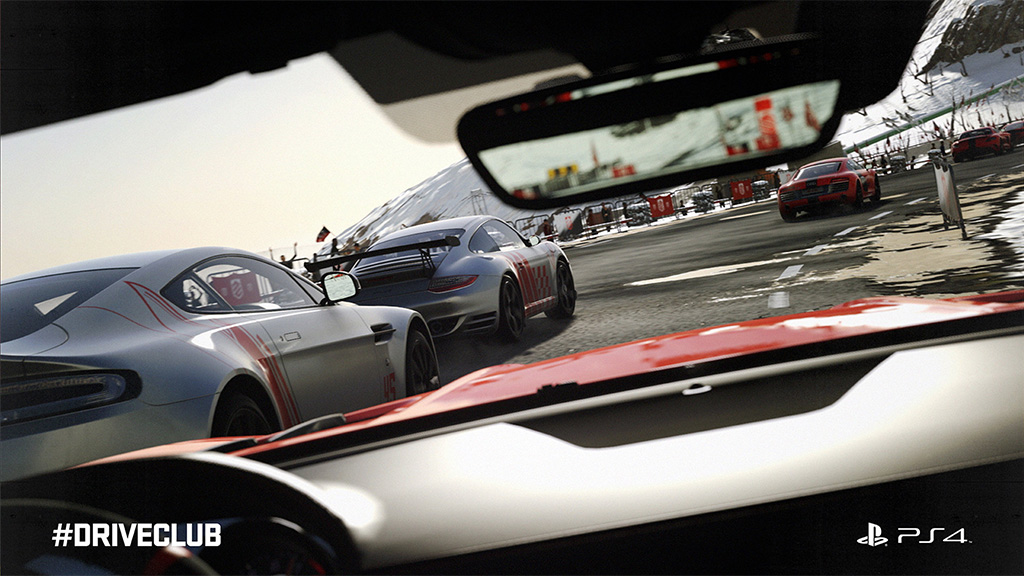
Using the game’s superb in-car dashboard view should be compulsory – failure to do so would be doing the developer’s efforts a disservice. It’s the tiny details you notice that take your breath away for a split second, such as the way the windscreen has visual streaks left by the windscreen wipers if the light shines at the right moment. Evolution have even thoughtfully added a second closer camera view positioned just in front of the wheel for a more accurate representation of the driver’s field of view. In another neat touch, the wheel animation depicts the driver’s hands turning the wheel a full 900 degrees – it may sound like a trivial detail, but you’d be surprised how rarely you see this applied to current racing games.
Unlike many racing games, it’s not just the cars that shine in DriveClub, as the environments have been afforded with a similarly astute attention to detail, resulting in some stunning scenery.
While clear cutbacks were made to the track texture quality in Forza Motorsport 5 in order to achieve 60fps, no such sacrifices are found in DriveClub. Evolution adopted a different approach, locking the framerate down to 30fps in favour of maximising the environmental detail. Whether or not it was a worthy trade-off is open to debate: framerate fanatics will no doubt deride DriveClub for its 30fps downgrade, but the level of detail on display is absolutely astonishing, and yet the framerate never falters, giving a sensational sense of speed. Admittedly, motion blur helps to disguise the lower frame rate, and DriveClub is limited to 12 cars per race as a trade-off, but it’s one of the smoothest examples of 30fps seen in recent racing games; a perfect balance between visual fidelity and frame rate fluidity.
Then there’s the incredibly realistic dynamic lighting. Here, Evolution went to extraordinary lengths that would be incomprehensible to most developers: every race has unique lighting conditions because the sky is uniquely generated with fully volumetric 3D clouds that realistically diffuse light from the sun. It’s particularly effective during day/night transitions, which can be sped up to 24x, as active sunlight temporarily blinds you and cascades into the dashboard convincingly. Night racing is equally spectacular, with the dashboard LED instruments illuminating the interior, while stars are accurately positioned in the sky in accordance to data provided by NASA. Seriously? Evolution’s anal attention to detail knows no bounds.
On closer inspection, some of the trackside details fare less well: one track famously features over one million trees, but they’re low detailed distant track objects in reality. But we’re nit-picking, to be honest. As an early example of the PS4’s potential prowess, DriveClub is a technical triumph that sets the benchmark for first party PS4 racing games. Polyphony are probably trembling with trepidation.
And while we’re still on the subject of DriveClub’s technical achievements, the audio design is also worthy of praise. Evolution recorded each car with 18 separate microphones, and it certainly shows – the audio effects realistically change according to your viewpoint, giving the engine sounds an organic quality that put most other racing games to shame. Forza Horizon 2 still arguably has the edge in terms of authenticity, though, and I’d argue the engines sound a tad too muffled in the dashboard view. Still, there’s a very good reason why the in-game soundtrack is switched off by default. Partially because it’s terrible, but mostly because the soundtrack of horsepower should suffice.
Despite such ravishing realism on display, DriveClub isn’t a hardcore simulation like you would expect, opting for accessible arcade physics which can be a jarring contrast to the realistic graphics. It’s like unwrapping a luxurious Ferrero Rocher and finding a sickly sweet Cadburys Creme Egg.
Persevere however, and DriveClub is a delight to drive, with a fluid, responsive handling model that tucks itself neatly between arcade and simulation. It’s a difficult feat that many developers have tried, but few have managed to fully achieve – and yet Evolution have managed to do so masterfully. DriveClub veers closer to the arcade side of the spectrum: think along the lines Grid, but with the nuance of Project Gotham Racing; a game that’s still often regarded as one of the all-time arcade racing greats. The only downside is that you can’t toggle with any driving assists, but it shows the confidence Evolution has in making its handling accessible and intuitive to everyone.
That’s not to say there isn’t any depth to the handling: while you can get away with late braking and the cars have generous grip for the most part with a tendency to understeer, taming the faster cars at speed still requires skill, while powerslides can be executed with liberal dabs of the handbrake.
Equip yourself with a Thrustmaster T300 GTE or T300 RS wheel, and DriveClub’s handling reveals its hidden depths, which heightens the fun and gives the cars an extra sense of weight. It’s remarkably responsive, too: Evolution collaborated closely with Thrustmaster to support precise 1:1 mapping that makes your steering inputs register in-game and translate on-screen with zero input lag. Some of the more feisty cars can be too tricky to tame, though, to the point it’s sometimes impossible to recover from a slide when counter-steering should correct it. It’s worth adjusting the wheel rotation settings and steering assist option to rectify this problem.
Euro-Vision
With 50-or-so cars in the base package, Driveclub’s car selection is somewhat sparse compared to some of its competitors. Evolution have been selective however, focusing on quality over quantity. Indeed, if the aim was to include the world’s fastest, exotic and most desirable supercars, DriveClub has duly succeeded for the most part.
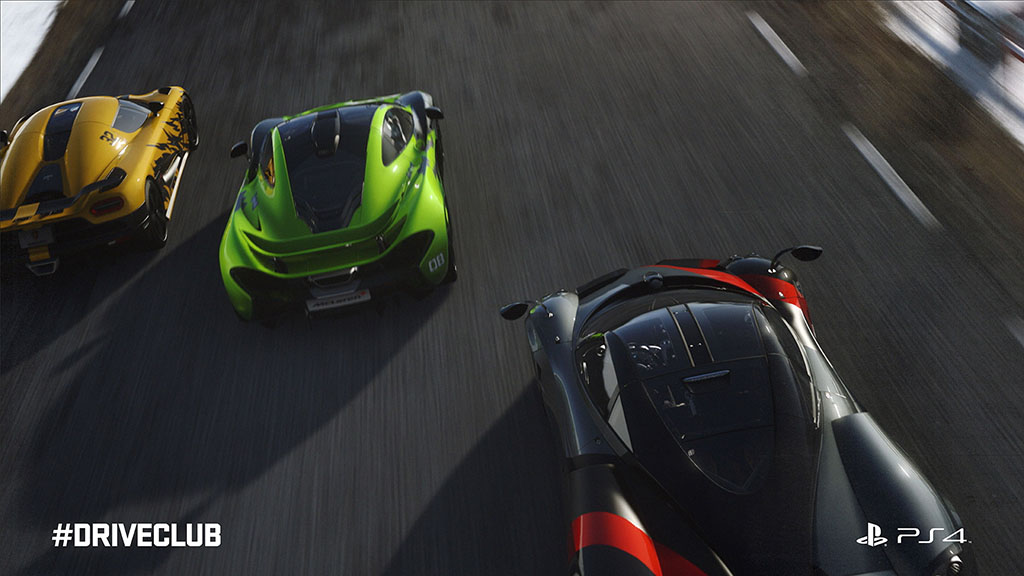
Indeed, once you get past some of the disposable entry level hot hatches (you surely didn’t buy DriveClub to drive a Beetle did you?), you’re left with the cream of the crop, from the mighty McLaren P1, the savage Koniegsegg Agera R and the ungainly Gumpert Apollo Enraged, to the feisty Ferrari F12berlinetta and the unhinged Hennassay Vencom which is absolutely terrifying to drive at speed. There are some obvious omissions, though – the biblical Bugatti Veyron perhaps being the most glaring in a game that prides itself on offering some of the fastest cars the world has to offer.
Intriguingly, the car selection is decidedly Eurocentric, to the point that manufacturers from America (no, the Hennessey Venom doesn’t count since it’s essentially a modified Lotus Exige) and Japan apparently doesn’t exist in DriveClub’s global sphere. DLC is at least starting to bring some American muscle to the lineup with the addition of several Corvettes and the SRT Viper, but a racing game without any Fords doesn’t seem right somehow. There are also still no Japanese cars available either, despite Japan recently being added as a track location. As a result, Honda, Nissan and Toyota, i.e. three of the world’s best-selling car manufacturers in the world, are unrepresented. The Nissan GT-R and Toyota GT88 need to be added promptly.
Still, it’s refreshing to find a car list concocted with such a strong European flavour. Car choice in racing games has started to become predictable and unexciting, yet DriveClub distinguishes itself with a roster that sheds some spotlight on some obscure cars that are often overlooked – it’s not often you see the Russian Marussia B2 (the game’s cover car, incidentally), the Spanish GTA Spano and the Dutch Savage Rivale GTR-S in the same game. The developers also have a penchant for ultra-modern cars – with the exception of some of the recently released DLC adding a few classic cars in the line-up to balance out the modern machines, you won’t find a car model older than 2013 in DriveClub.
Back on track
DriveClub has come a long way since its troubled launch, and is a markedly different and better game for it. It’s an eye-opening transformation that highlights the importance of post-game support. Evolution could have easily simply fixed the server issues, release a few slapdash DLC car packs and sit back. But they haven’t – far from it. Regular game updates have added some significant game-changing content and improvements that keep you coming back. Put simply, Evolution have done an exemplary job, providing some of the most dilligent post-release support for a game in recent memory.
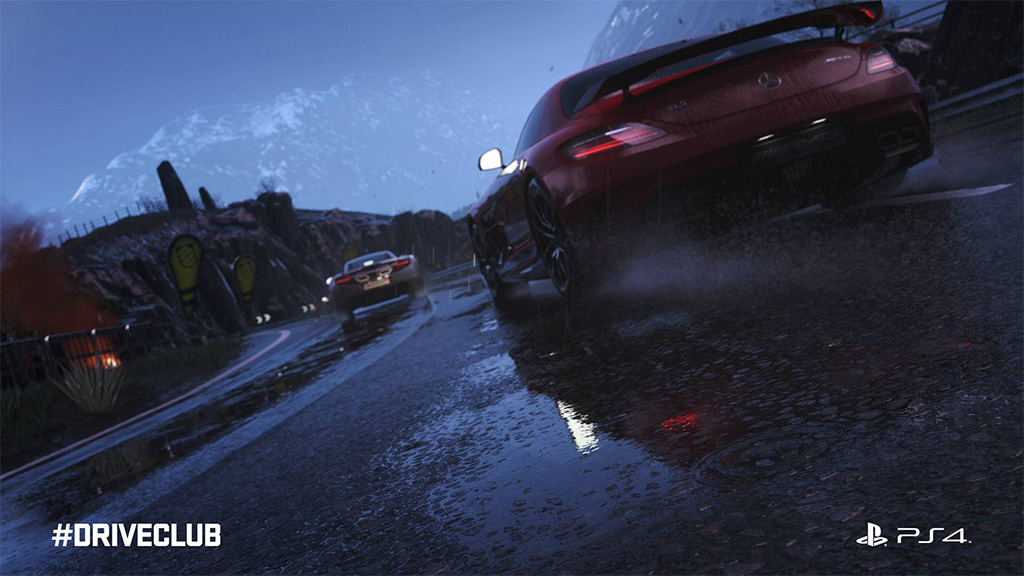
Chief new addition is the dynamic weather update, and it’s a game-changer in many ways, effectively giving DriveClub a new lease of life. Sudden torrential downpours look spectacular, puddles realistically reflect in the road, while water sloshes around the windscreen dynamically when you turn and individual droplets drizzle down the bodywork. Again, Evolution’s attention to detail is astounding: listen closely, and you can make out the subtle sound of the wipers scraping against the windscreen. DriveClub sets the benchmark for weather effects not just in racing games, but any game period.
The dynamic weather isn’t just eye candy either – it has a profound effect on your driving. Not only do the weather effects realistically limit your visibility to the point it can be just as blinding as bright sunlight, (trying to race at night in a full-on blizzard is not for the faint hearted), but the rain-soaked tracks affect your traction requiring you to gingerly feather the throttle, making RWD cars more susceptible to sliding. It’s a shame weather effects weren’t added to the main tour events, although Evolution do seem to be overusing the effect lately: the majority of post-release tours are set in the rain, as are online events. You can tell the developers are British.
Other notable extras recently added include a new free track location set in Japan along with the belated replays and a photo mode. Again, Evolution haven’t implemented these features half-heartedly: replays can be viewed from a multitude of different angles including the cinematic trackside camera along with the usual game cameras, while the photo mode is surprisingly comprehensive – it’s easily comparable to the advanced photo modes in Gran Turismo and Forza Motorsport, allowing you to alter the shutter speed, focal points and the ability to add fancy filters that can make anything look photogenic. Granted, you could argue these features should have been in the game in the first place, but at least the developers are actively responding to fan feedback.
Even the car packs have been consistently strong. A few too many Ferraris and near-identical Corvettes have featured for my liking, but there have been several standout additions such as the Ferrari F50 and Koenigsegg One:1, while new manufacturers are being regularly added to the roster including the star debut of Lamborghini. Better still, Evolution releases one additional free car each month, and it’s always something obscure you never could have predicted: the Icona Vulcano and W Motors Lykan Hypersport were unexpected surprises.
Why so serious?
When you analyse it, DriveClub is a conflicting hybrid of a game. On the one hand, it wants to be taken seriously: the sombre soundtrack greeting you in the menus is practically po-faced, while, as noted before, the near-photorealistic visuals put you in the mind-set that you’re about to play an advanced driving simulator, only to find that DriveClub is an old-school arcade racer at heart.
Likewise, the fictional tracks set in mountains with sweeping bends designed for prolonged powerslides should rightfully belong in an arcade racer. But have too much fun, and you get a slap on the wrist courtesy of DriveClub’s penalty system that feels like it should be in a high-brow sim racer. It’s a bit more lenient now, thankfully, but cutting corners or knocking into opponents still results in an infuriating penalty that temporarily slows you down – it’s made all the more frustrating when you get penalised for being rammed by a careless racer. It saps some of the fun somewhat, and is a stark contrast to Evolution’s madcap MotorStorm series which actively encouraged rebellious racing.
Similarily, the online social features have radical ambitions, yet the World Tour career is comparatively conservative. The result is a game that’s brimming with passion (a fact that’s made abundantly clear when you read some of the harrowing personal developer messages who endured long working hours reaching out to distant family members in the credits), but strangely lacking a solid identity.
None of this matters though, because once you get behind the wheel you’ll be hard pressed to let go once DriveClub reels you in. It may have had a stalled start, but DriveClub has come into its own thanks to its phenomenally photo-realistic visuals, accessible and enjoyable handling, compelling club component and regular stream of quality game-enhancing content. Fun and thrilling, beautiful and addictive, challenging and rewarding, DriveClub ranks as the PS4’s current reigning arcade racer.
Our Review
Summary
It may have had a stalled start, but DriveClub has come into its own thanks to its phenomenally photo-realistic visuals, accessible and enjoyable handling, compelling club component and regular stream of quality game-enhancing content. Fun and thrilling, beautiful and addictive, challenging and rewarding, DriveClub ranks as the PS4’s current reigning arcade racer.


